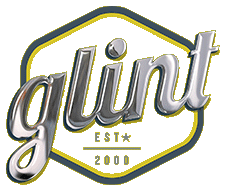Many people assume that you need to have an annual marketing plan ready before the year even starts to see any success. This philosophy is great in theory (being prepared), but it is often rare that a marketing plan doesn’t alter based on business conditions and opportunities. However, for those who are still trying to put something together, keep in mind ROI (return on investment) should be the overarching focus with the plan. Here are some of the top platforms to consider in 2020.
How Does ROI In Marketing Work?
Before getting into the platforms themselves, let’s briefly talk about the importance of marketing ROI. Many marketers get lost in all the KPIs out there and lose sight of what’s most important. As an example, say that you put together a social media campaign utilizing a popular influencer, who isn’t necessarily related to your niche. The influencer does their job, leveraging their fanbase to try and visit your sites, but you don’t necessarily get many conversions. Conversion drop is probably happening because the fanbase the influencer reaches is less likely to buy your product or service.
If the marketing team was focusing the tactic on web traffic, they might see this as a success. However, in terms of ROI, this is probably not an ideal tactic. With low conversions vs. paying for the influencer, you may even end up losing money when all is said and done. However, if this is a branding play and you’re looking to create the first touchpoint with this audience, then this could be very powerful, long-term.
So, how can you tell if a given platform has a successful ROI? The best way to measure this is by taking your sales growth from the venture, removing the marketing costs, then dividing by the marketing costs. If you saw a sales growth of $2,000 from a campaign that cost $200, you received a 900% ROI from it. There are other measurements worth looking out for, like branded queries or referrals, but that’s the base calculation you want to have in mind. Now, we can start getting into specific platforms.
Video Marketing
For many marketers, a successful video campaign is the crown jewel of their overall strategy. From increasing your traffic to growing revenue, a single successful set of videos can deliver a variety of different benefits. On top of this, when looking at ROI, this is one of the strongest options possible. Some marketers may be wary of video due to cost perception, but new technology has made it easier than ever to break in. In fact, some professional-grade videos can be created utilizing newer smartphones, smart lighting, and a little planning. Along with this, video tends to draw people in for longer periods than many other digital and traditional tactics. Thus it can allow you to tell a better story.
So, with that said, how do you guarantee video marketing success? As video marketing continues to grow, bad editing or poor audio isn’t going to cut it, so first, video quality matters. Another thing you want to make sure you’re doing is taking full advantage of the platform hosting your video. A video series about your services provides the opportunity to define facts while crafting a narrative. It may be worth working with outside help to create a true video script if you’re struggling in this area.
CRM/Marketing Automation
Depending on whom you ask, these are two separate categories of software, and both play a vital role in marketing ROI. For example, a CRM (Customer Relationship Management) tool is generally associated more with the sales world, helping to chart all interactions with clients and prospects. Marketing automation is more about helping companies streamline some of their existing marketing tasks utilizing automated responses and drip campaigns. Since sales are uniquely tied to marketing and marketing typically needs a sales converter to close, Glint believes these categories should be combined and provides this type of blended platform for their clients. Learn more about the Glint platform here.
Most people assume ROI is mainly financial, and while that is true, it can also be evaluated through time involvement cost. Using the previous influencer example, it takes time to find the right influencer, negotiating, rolling out the campaign, and running the calculations to determine if the campaign was successful. Marketing Automation platforms help cut down on your time costs by automating and personalizing basic, but necessary tasks.
Social Advertising
Successful advertising is all about being where your audience is, and that means having a social media plan in place. These are great platforms to build marketing ROI because the cost of entry is relatively affordable, and there is an extensive audience available that can be segmented. With this in mind, let’s do a quick run-through of some actionable advice for marketing success on three of 2020’s most popular platforms.
- Have concrete goals in mind (driving traffic, conversions, adding value)
- Use all of Facebook’s features to help determine who your ads/marketing target
- Be proactive when it comes to creating engagement opportunities
- Schedule content ahead for optimized timing
- Optimize your biography for a strong first impression
- Ensure your visual content stays at a high quality
- Optimize through smart use of hashtags
- Maintain a regular pace of content
- Remember you are targeting a business audience
- Analyze competitor pages for advice
- Use commenting and engagement to drive your content
- Be sure to understand why people use Linkedin (connections, business development) when drafting content
Creating An Overarching Campaign Strategy
It’s also important to remember that you need an overall marketing strategy in place, not just a concept. Using only video marketing, or Marketing  Automation, or social advertising isn’t likely to yield success. One major trend that we’re seeing is finding ways to link traditional and digital marketing together and ensuring you have at least three points of integration. An approach like this also allows companies using legacy approaches to leverage their expertise while competing in the digital age.
Automation, or social advertising isn’t likely to yield success. One major trend that we’re seeing is finding ways to link traditional and digital marketing together and ensuring you have at least three points of integration. An approach like this also allows companies using legacy approaches to leverage their expertise while competing in the digital age.
An example of this in practice is vanity URLs. These are essentially URLs that make it easier for people to remember a web address, while also redirecting to a longer URL with tracking info. On one end, you’re increasing your brand presence by making it easier for people to remember your site/pages. On the other hand, you’re able to grab some vital tracking info to power your decision making. This is a great type of measurement to start tracking marketing ROI.
Call tracking operates on a similar principle. Many companies underestimate precisely how much of a role calls can play in lead generation, whether it’s cold calling or following up on other marketing efforts via a phone call. Call tracking allows you to tie campaigns to a single business number helping you determine which marketing tactics are delivering. It’s also important to note that the calls are recorded to help you better train your sales team on the way’s to handle and close inbound calls. Like other marketing tracking, this makes it easier to determine which methods are successful, and which need to be improved.
2020 may be rolling along, but that doesn’t mean you have missed the boat in terms of your marketing strategy. Making some key adjustments throughout the year can contribute to better ROI and the impact of marketing. However, when you’re making shifts, a good starting point is to consider working with a veteran marketing agency, like Glint Advertising. By taking a look at your current goals and marketing plans, we can help you find the ideal platforms to grow your business.







